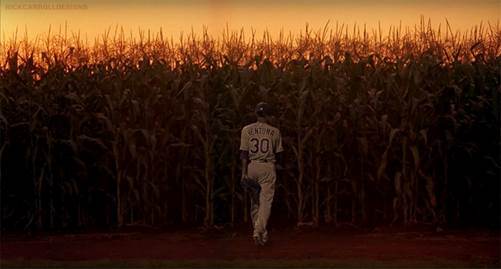I am never sure what will be in my next Hot Stove post. I start piecing together things I pick up from the papers, books, Twitter, etc., and also have a reserve of items I am pondering. For this post, three items came together to create my imaginary bar scene. The last Hot Stove (“Martin, Jackie and Roberto”) was posted in anticipation of the Martin Luther King holiday, and on the actual holiday, President Obama feted the Chicago Cubs. A casual conversation over coffee led me to the rabbi. And the patron saint of baseball in Puerto Rico gets an encore.
President Obama and the Cubs: In 1908, the Chicago Cubs won the World Series. Theodore Roosevelt was the President (#26). What would happen first after that? Another Cubs victory in a World Series or the election of an African-American President? It took a 100 years to find out, but we got the answer in 2008 when Barack Obama was elected to be our 44th President. In 2016, after 108 years and 18 more presidents, the Cubs ended their World Series drought. Chicago celebrated in Grant Park for both events on November 4 (2008 and 2016):
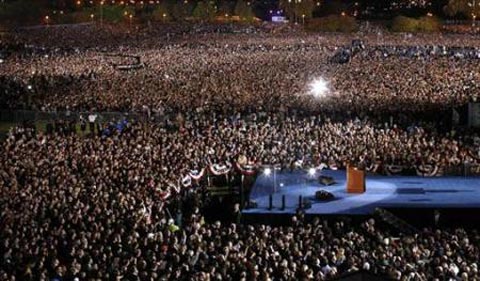
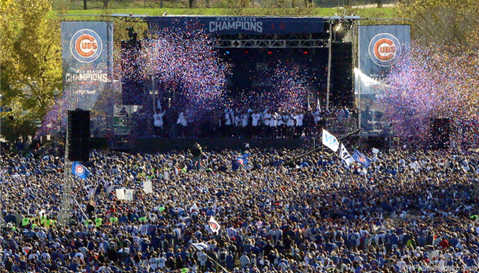
In his last public event at the White House, President Obama hosted the Cubs to celebrate their championship. Obama is a long-time resident of Chicago and notoriously a fan of the Chicago White Sox. Cubs honcho Theo Epstein offered Obama a pardon for being a Sox fan and welcomed the President into the Cubs family. Obama’s response: “Among Sox fans, I’m the Cubs’ No. 1 fan.”
Noting that it was the Martin Luther King holiday, Obama commented on the diversity of the 2016 champions, much different than the last Cubs team in the World Series (their 1945 loss to Detroit). In 1947, Jackie Robinson broke the color line, and the Cubs first black player was Ernie Banks in 1953. Obama said “Throughout our history, sports has had this power to bring us together, even when the country is divided. Sports has changed attitudes and culture in ways that seem subtle, but, ultimately, made us think differently about ourselves and who we were…It is a game. It is celebration. But, there is a direct line between Jackie Robinson and me standing here. There’s a direct line between people loving Ernie Banks and then the city being able to come together and work together in one spirit.”
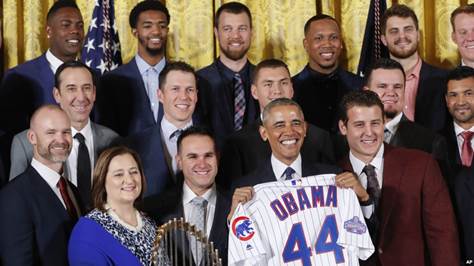
Thank you Mr. President, and thanks to Saturday Night Live for the inspired goodbye (click here, 2:35).
The Rabbi was a Giants’ Fan: In Hot Stove #17, I told the story of Moe Berg, a catcher for the Washington Senators in the 1930’s. Moe was also an American spy and linguist who gained some fame from a popular 1994 biography, The Catcher Was a Spy. Berg is also remembered as a prominent Jewish player in the major leagues. I was recently discussing this over coffee with Dan Margolies and we chuckled over the old punch line about Moe: he was fluent in eight languages but could not hit in any of them. Dan also added some new (to me) trivia: there was another Jewish catcher in the 1930’s, and that catcher is a major player in Margolies family history.
Dan’s father, Morris Margolies, at the age of 8 in 1930, moved with his family from Jerusalem to the Bronx. He became interested in baseball which proved to be a good way to acclimate to his new American life. But he was not sure which New York team should be his favorite. There were three at the time, the Yankees, Giants and Dodgers. He learned from a friend that only one of the teams had a Jewish player – Harry Danning, a catcher for the Giants. This made the boy (and the rabbi he became) a lifelong Giants fan even after the family moved to Kansas City and the Giants relocated to San Francisco.
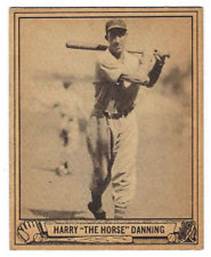
Dan’s story took me to Google for more info on Danning. His nickname was “Harry the Horse,” after a Damon Runyon underworld character. A sportswriter had given him this moniker after he thought Danning worked like a horse in the 1936 World Series against the Yankees. Danning played ten seasons with the Giants from 1933 to 1942 and was an all-star four times. He and four other Giants batters hit home runs in the same inning in 1939 – the first time in the history of the game that one team had five homers in an inning. [KC A’s Trivia – Five home runs in one inning in the American League has only happened one time – the Twins did it to the KC A’s in 1966]. Danning joined the military after the 1942 season and did not return to playing baseball.
The Giants having a Jewish player was no accident. Legendary manager John McGraw led the Giants from 1902 to 1932. He had a string of four NL pennants from 1921 to 1924, but the team was losing the battles for publicity and attendance to the Yankees who had acquired Babe Ruth in 1920 and opened Yankee Stadium in 1923. McGraw set out to reverse this trend by fielding a Jewish player to appeal to the baseball savvy Jewish community. McGraw was not subtle about his search. In a 1923 newspaper article, he was quoted saying “I would give $100,000 for a Jewish player who even had the prospect of becoming a real star…looking for this man for the past five years…scoured the country…fifty percent of the patrons of baseball, especially in New York, are Jewish, and for years have been hoping that one of their faith to be a member of the Giants.” McGraw may have been a little off on the number, but another source put the Jewish population at 30% of the 5.6 million in NY in the 1920’s.
McGraw’s first recruit came late in 1923 when the Giants purchased the minor league contract of Mose Solomon who was playing in Hutchinson, Kansas. Solomon was a slugger known as the “Rabbi of Swat,” but his major league stay was only for two games at the end of 1923. Other Jewish players followed, including Andy Cohen and Harry Rosenberg, but McGraw never found his star. In a 2014 post about Solomon and McGraw, Joe Posnanski had this anecdote: in 1928, a young player sent word to McGraw that he would “love to shag fly balls during Giants batting practice and show the team his ability.” But McGraw declined, saying “Henry Greenberg has already been scouted by the Giants, and he will never make a ballplayer.” So Hank Greenberg ended up in Detroit for his Hall of Fame career.
McGraw retired during the 1932 season and so never managed Harry Danning who played a part of 1932 on a Giants farm team. McGraw’s successor Bill Terry added Danning to the major league roster in 1933 and also brought up another Jewish player, Phil Weintraub. In 1934, Weintraub and Danning went to spring training with the Giants in Florida where a hotel refused to register the two Jewish players. Terry threatened to take away the whole team and the hotel backed down. Weintraub and Danning were also often subject to anti-Semitic taunts from opposing players. None of this would be a surprise to the black players who followed.
My Google search of “Rabbi Margolies and baseball” netted a couple of real gems. One was a 1997 column written by Rabbi Margolies in the Kansas City Jewish Chronicle. He reminisced about attending the 1955 World Series between the Brooklyn Dodgers and the New York Yankees (two NY teams, but not his beloved Giants). He was still residing in New York at the time, serving a congregation in Brooklyn. His good friend, Judge Samuel Lebowitz, invited Margolies to join him in his box for the first game at Yankee Stadium. Lebowitz had gained fame as the lawyer who successfully defended the “Scottsboro Boys” in 1932. The judge’s seats were in the front row, right behind the Dodgers’ dugout. The judge knew Jackie Robinson and introduced him to Rabbi Margolies during the pregame. This was their exchange:
Rabbi: “Jackie, I want to give a sermon about this World Series Opener and you’re the key to it. Could you please tell me how, after nine years in the majors, you feel about the experience.”
Jackie: “ Funny you should ask. You’re a Jewish minister. If I know anything about Jews, I’ll tell you I felt and still feel the way Jews must have felt during thousands of years of discrimination. You took a lot of guff, but you refused to play dead. Well, I’ll never play dead as long as I’m alive.”
The Dodgers lost that first game, but Rabbi Margolies witnessed one of the classic plays in World Series history. In the 8th inning, with Whitey Ford pitching, Jackie Robinson stole home. Catcher Yogi Berra begged to differ. The video is well known to longtime baseball fans. Click here. The judge invited Rabbi Margolies back for the seventh game, and so he witnessed another classic event, the first-ever World Series championship for the Dodgers.
The other piece I found was written by Dan’s sister Malka who draws a lovely portrait of her father and baseball. She tells the story of her dad as a teenager taking his father (her grandfather, also a rabbi) to a game in a futile attempt to get the grandfather to appreciate baseball. After a home run, the grandfather proclaimed, in Yiddish, “So what has he accomplished? He started out at home plate and he ran all the way around the bases to where he started.” The grandfather never attended another game. Morris Margolies persevered and continued in his passion for baseball, and after becoming a rabbi, often worked baseball into his sermons. He also developed a “Torah and Baseball Quiz” to test his relatives and friends. Hot Stove reader Stan Zeldin tells me that he often went to Royals games with Rabbi Margolies and that always meant an evening of exchanging obscure baseball trivia.
The articles by Rabbi and Malka Margolies are well worth reading. Click here and here.
Rabbi Margolies was born in 1921 and died in 2012. The New York Giants won the World Series in both of those years. Two years after his death, his two favorite teams, the Giants and the Royals, faced off in the 2014 World Series. Malka Margolies feels that such a Series was “dreamt up in heaven” by her father. The photo below is from her article, and although I know I am wrong, I like thinking that the Hebrew inscription at the end of the tombstone reads “AND BASEBALL”.
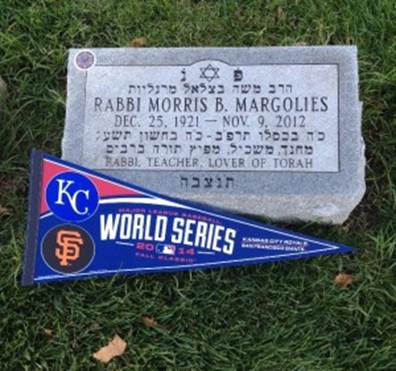
The two most well-known Jewish baseball players are Hank Greenberg and Sandy Koufax, each of whom famously declined to play on Yom Kippur (as did Harry Danning). My favorite reminder of the Koufax history is from the movie The Big Lebowski. Walter Sobchak (played by John Goodman) converted to Judaism when he married. He later divorces, but remains committed to Judaism because, as he explains to “The Dude”(Jeff Bridges),…
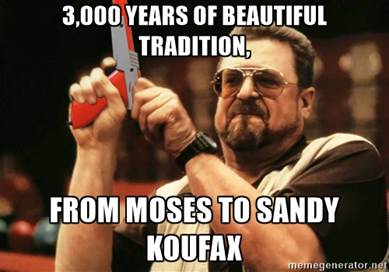
Roberto Clemente’s Grand Home Run: Following up on the Clemente piece from Hot Stove #31, I want to pass along a story from my law partner Tim Sear. Tim grew up in Dubuque, Iowa, where the Pirates were the parent team of the Class D Dubuque Packers in 1959 and 1960. When Tim was three years old, the Pirates won the 1960 World Series on Bill Mazeroski’s walk-off home run. This triggered a Sear family tradition of annual pilgrimages to Chicago to see the Pirates play the Cubs at Wrigley. Tim remembers being on those trips in the late 60’s as Clemente, Stargell, Mazeroski, Sanguillen and their teammates were working their way to becoming the 1971 world champions. The pitching star for the ’71 Series was Steve Blass who had pitched for Dubuque in 1960. Tim is proud of (and still has) his Clemente bats and glove. Here is his Clemente story:
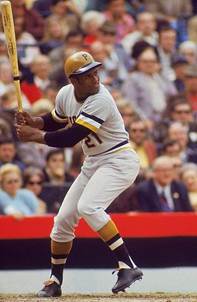
The three most exciting home run scenarios are a grand slam, a walk-off homer and an inside-the-park homer. The only time all three of these happened in the same at bat was on July 25, 1956. The man at the plate was Roberto Clemente who was in his second season with the Pirates. It was the bottom of the 9th, bases loaded, nobody out, Cubs leading 8-5 at Forbes Field in Pittsburgh. Jim Brosnan was brought in to relieve for the Cubs. He threw only one pitch, high and inside. Clemente hit a long fly ball that bounced off the light standard in left field and then rolled along the cinder path toward center field. The three men on base scored easily to tie the game. The third base coach was manager Bobby Bragan who signaled for Clemente to stop with a triple. No way. The throw came in from the outfield to shortstop Ernie Banks who relayed it to home, but Clemente slid in just in front of the throw. Clemente at first missed the plate but reached back for the touch to complete his walk-off inside-the-park grand slam. Sadly, there is no video or radio broadcast that survives to capture the moment.
There was some controversy over Clemente’s running through Bragan’s stop sign. With no outs, there was a good chance that Clemente would eventually score from third to win the game. The person who was especially miffed was pitcher Jim Brosnan who later wrote in a stereotype rant that “Clemente features a Latin-American variety of showboating.” I think Brosnan was still feeling the sting of throwing only one pitch and blowing an 8-5 lead. And if Clemente had stopped at third, this story would not exist. There can be a fine line between goat and (sometimes lucky) hero, but I’m glad Clemente ignored Bragan, just as I am glad that Eric Hosmer took his mad dash in Game 5 of the 2015 World Series. Fortunately, Hosmer’s score is on video and I never tire of watching it.
[Inside-the-Park Trivia: On June 15, 1940, a player hit for the cycle at the Polo Grounds. His single, double and triple were joined by a rare occurrence for a cycle, an inside-the-park homer. It is the last time that this unique cycle combination has occurred in the National League. The hitter was “Harry the Horse” Danning.]
Yordano (“Ace”) Ventura: Royals pitchers and catchers report for Spring Training in Arizona on February 14. Tragically, Yordano Ventura will not be there. I was stunned this past Sunday morning when I was scrolling through my Twitter feed and saw the horrible news. The Kansas City Star sportswriters added thoughts and news on Twitter the rest of the day and then followed with first class journalism in the print editions. Special kudos to sportswriter Vahe Gregorian and photographer John Sleezer for their professional and sensitive coverage of the funeral. I was also touched by the Twitter videos of Christion Colon and Danny Duffy at the stadium all day Sunday and then, joined by Ian Kennedy, during the candlelight vigil that night. Colon often acted as an interpreter for Ventura, including after Ventura’s pitching gem in Game 6 of the 2014 World Series (with Dominican flag on the table):
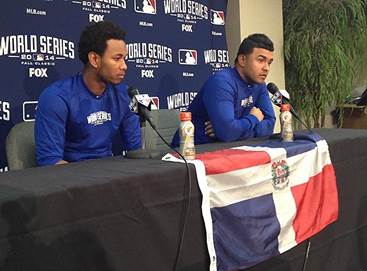
Colon posted this remembrance of his friend: “How can I even begin to explain how much I cared about you? You were like a little brother to me. You were a tough one to deal with but with your love and smile you could always make everything ok. We would have long conversations about life, about how much we wanted to be great in all aspects of life. I knew the struggle you had to overcome to get to where you were and I could always see it in our eyes that you wanted more. I knew your secrets and I knew your strengths. I knew anytime you needed a teammate to help you with something, that teammate would be me. I’m so happy to be able to say I knew you. I’m gonna miss you more than you know. I know at times you were tough but I knew you were just misunderstood. Love you bro and you will forever have a special place in my heart.”
Previous
Now in the Field of Dreams. R.I.P. ACE
